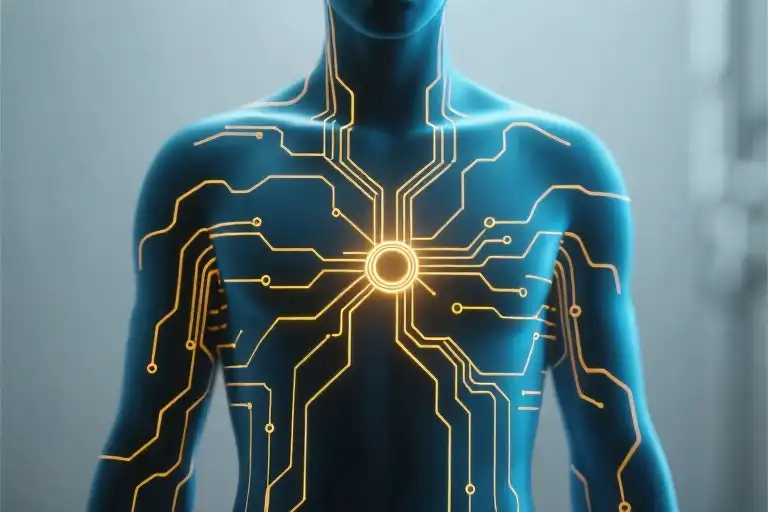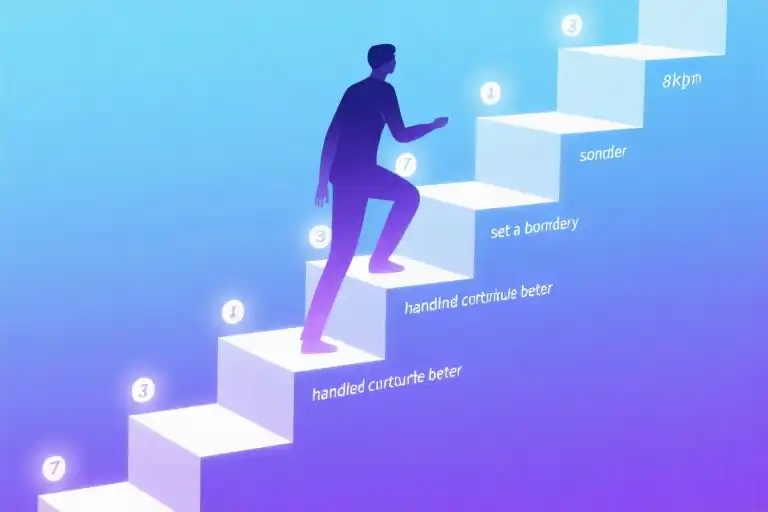Waiting is painful. Not just uncomfortable or inconvenient, but genuinely painful in a way that settles deep in your bones. It’s that weight on your chest when you wake up each morning, the silent mockery of unanswered emails and unreturned calls, the clock that seems to have forgotten how to move forward. This particular brand of pain doesn’t announce itself with dramatic flair—it simply moves in, unpacking its bags in the quiet corners of your daily routine.
There’s a physicality to waiting that we often overlook. Your shoulders carry the tension of possibilities that haven’t yet materialized. Your stomach knots around the morning coffee when another day begins without news. The space between heartbeats stretches unnaturally long when you check your phone for the hundredth time. This isn’t metaphorical suffering—it’s a real physiological response to sustained uncertainty, your body’s honest reaction to living in the gap between what is and what might be.
The silence of waiting has its own peculiar quality. It’s not the peaceful quiet of a library or the comfortable hush of a sleeping household. This silence feels personal, almost intentional—as if the universe has decided to withhold sound specifically from you. The absence of news becomes a presence in itself, a loud nothingness that fills rooms and interrupts thoughts. You find yourself reading meaning into the lack of communication, constructing entire narratives from what hasn’t been said.
Time transforms during these periods. The clock doesn’t just slow down—it becomes unreliable, inconsistent. Some hours drag like years while entire weeks disappear into the fog of anticipation. You measure time not in hours or days but in mental checkpoints: “If I haven’t heard by Friday” becomes “Maybe after the weekend” evolves into “Surely by the end of the month.” The calendar becomes both a map of hope and a record of disappointment, each crossed-off day representing another rotation around the sun without resolution.
What makes this experience universally human is how it transcends circumstances. The specific content of our waiting varies—a job offer, test results, a returned message, a sign of change—but the essential experience connects us across backgrounds and cultures. We all know the particular ache of suspended animation, that sense of being simultaneously stuck in place while life continues moving around us.
There’s an intimacy to this shared understanding that often goes unspoken. We recognize it in the tired eyes of the person next to us in the waiting room, in the forced cheerfulness of a friend who’s “still waiting to hear back,” in the careful way we all learn to ask “Any news?” without applying pressure. This quiet fellowship of waiters forms an invisible network of mutual understanding, bound together by the common experience of living in limbo.
The pain of waiting isn’t just about the thing we’re waiting for—it’s about what the waiting does to us in the meantime. It tests our patience, challenges our self-worth, and confronts us with our deepest insecurities. In the empty spaces between actions and outcomes, we have nowhere to hide from ourselves. The waiting becomes a mirror reflecting back all the things we usually keep busy enough to avoid confronting.
Yet within this discomfort lies an unexpected opportunity. The very qualities that make waiting so difficult—the uncertainty, the lack of control, the forced patience—also create the conditions for genuine growth. There’s something about being stripped of our illusions of control that allows for a more honest engagement with ourselves and what we truly value. The waiting room, however uncomfortable, becomes a classroom where we learn lessons we might otherwise have avoided.
This initial confrontation with waiting’s painful reality isn’t meant to discourage but to validate. There’s comfort in naming the beast, in acknowledging that yes, this hurts, and no, you’re not imagining the weight. The first step toward navigating any difficult experience is always to look directly at it without flinching, to say clearly: this is what I’m dealing with, and it’s harder than I expected.
What Are We Waiting For
We all carry our own versions of waiting. Some of us stare at inboxes, hoping for that email that says “we’d like to offer you the position”—not just any position, but one that finally acknowledges the skills we’ve spent years honing. The kind of job where you don’t have to shrink yourself to fit someone else’s expectations, where your potential is recognized rather than questioned.
Then there’s the waiting that happens in doctor’s offices and therapy sessions. The kind where you’re not just marking days on a calendar but measuring progress in small, almost invisible increments. Physical healing has its own timeline, one that doesn’t care about your vacation plans or career goals. Mental healing operates on an even more mysterious schedule, with setbacks that feel like personal failures rather than part of the process.
And love—that particular brand of waiting might be the most confusing of all. You’re not waiting for just anyone, but for someone who doesn’t make you question your own worth. Someone who sees the complicated, messy parts of you and doesn’t run in the opposite direction. It’s not about finding perfection, but about waiting for that rare connection where you can breathe freely without pretending.
What makes waiting so particularly agonizing isn’t just the absence of what we want, but the sensation that life continues moving around us while we’re stuck in place. You watch friends get promoted, colleagues start families, acquaintances buy houses—all while you’re still waiting for your turn. It creates this subtle but persistent anxiety that you’re falling behind, that somehow you’re missing the instructions everyone else received.
There’s a peculiar loneliness to waiting, even when you’re surrounded by people who care about you. They can offer comfort and distractions, but they can’t speed up the process or truly understand the specific weight you’re carrying. Each type of waiting creates its own isolation—the professional limbo that makes you question your competence, the health journey that separates you from your former self, the relationship purgatory where you wonder if you’re asking for too much or too little.
Yet within this shared experience of waiting, there’s an unexpected connection. However different our specific circumstances might be, we all know what it means to watch the clock tick slowly, to check our phones too frequently, to alternate between hope and resignation. This common ground doesn’t make the waiting shorter or easier, but it does remind us that we’re not waiting alone—that this is simply part of being human, navigating the spaces between what is and what might be.
The Cyclical Nature of Waiting
Waiting operates on a psychological loop that defies linear expectations. It begins with that initial spark of hope—the email notification that could be the job offer, the doctor’s call with test results, the message from someone you’ve been hoping would reach out. Your heart quickens, your mind races through possibilities, and for a moment, the weight lifts. This is it, you think. The waiting might finally be over.
Then comes the crash. The email is another newsletter. The doctor’s office calls to reschedule. The message is from a telemarketer. Disappointment doesn’t just return; it amplifies itself with each cycle, each failed expectation layering upon the last until the mere act of hoping feels like setting yourself up for inevitable pain.
This hope-disappointment cycle creates a peculiar psychological phenomenon where time distorts itself. Days spent waiting feel simultaneously endless and fleeting—endless in their minute-by-minute drag, yet fleeting in how weeks can disappear into the fog of anticipation without any tangible progress. You find yourself checking clocks, refreshing inboxes, rehearsing conversations that never happen, all while real life continues around you in what feels like fast-forward.
What makes this cycle particularly cruel is the self-doubt that creeps in during the downward swing. After enough disappointments, the mind naturally seeks patterns and explanations. If good things aren’t happening, the easiest conclusion is that you must be the problem. “Maybe I’m not qualified enough,” you think after another job rejection. “Maybe I’m too broken to heal properly,” crosses your mind during prolonged recovery. “Maybe I’m just not lovable,” whispers that inner voice after yet another failed connection.
These thoughts aren’t just passing observations; they become reinforced narratives with each cycle of hope and disappointment. The mind, seeking to protect itself from further pain, begins to preemptively lower expectations. You stop allowing yourself to hope too much, to imagine too vividly, to want too desperately. This protective mechanism might spare you some immediate pain, but it also robs you of the vitality that comes with genuine anticipation and desire.
Psychology recognizes this struggle as related to uncertainty tolerance—the ability to withstand not knowing outcomes. Some people can sit comfortably with unanswered questions, while others find uncertainty almost physically painful. If you’re reading this, you likely fall into the latter category, and there’s nothing wrong with that. It simply means your brain is wired to seek resolution and predictability, which makes waiting particularly challenging.
The non-linear nature of waiting means that progress isn’t always visible. You might be developing resilience, gaining clarity about what you truly want, or building skills that will serve you later—all without any external validation that these internal shifts are occurring. This invisible growth makes the waiting period feel stagnant when in reality, important transformations are happening beneath the surface.
Many people mistake the cyclical nature of waiting for being stuck in one place, but there’s a crucial difference. Being stuck implies no movement whatsoever, while the waiting cycle, despite its frustrating returns to disappointment, actually moves you through different psychological states that each serve a purpose. The hope phases keep you connected to possibility. The disappointment phases, however painful, provide reality checks and opportunities for adjustment. Even the self-doubt phases, when approached with awareness, can reveal areas where genuine growth might be needed.
Understanding that waiting operates in cycles rather than straight lines can be liberating. It means that feeling hopeful again after disappointment isn’t naive—it’s part of the process. It means that moments of doubt don’t indicate failure but are natural fluctuations in a complex psychological experience. It means that the very cyclical nature you might resent actually contains within it the mechanisms for eventual breakthrough.
This cyclical pattern continues until something fundamental shifts—either external circumstances change, or your relationship to the waiting itself transforms. Often, both occur simultaneously, though rarely in the dramatic, cinematic way we imagine breakthroughs should happen. More frequently, the change comes quietly, almost imperceptibly, until one day you realize the weight has lightened, not because what you were waiting for arrived, but because you’ve grown around it.
The uncertainty that feels so threatening initially often becomes the very space where the most important developments occur. In the gap between expectation and reality, in the silence between actions and outcomes, something essential takes root. It’s in these spaces that we often discover who we are when we’re not getting what we want—and that discovery frequently proves more valuable than whatever we were waiting for in the first place.
The Tools to Stop Self-Punishment
That voice in your head during waiting periods—the one that whispers you’re not good enough, that you made a mistake, that this endless pause is somehow your fault—is perhaps the most damaging part of the entire experience. We become our own worst critics, constructing elaborate narratives of failure and inadequacy that have little basis in reality. The good news: you can learn to quiet that voice. These tools aren’t about eliminating the wait, but about changing your relationship with it.
Cognitive Reframing: Separating Fact from Fear
Your mind during waiting periods operates like a conspiracy theorist connecting random dots into catastrophic patterns. A delayed email response becomes proof you’ll never get the job. A slight ache convinces you the medical tests will come back positive. This isn’t intuition—it’s fear masquerading as insight.
Cognitive reframing begins with a simple but powerful question: “What do I actually know to be true?”
Take a blank page and draw a vertical line down the center. On the left side, write “Facts”—only what you can verify with evidence. On the right, “Fears”—the stories your mind has created. For someone waiting for job interview results, the fact column might contain: “I had a 45-minute interview yesterday. The hiring manager said they’d contact me by Friday. I sent a thank-you note this morning.” The fear column often reveals more: “They probably found someone better. My answer to the second question was weak. They’ve already decided against me.”
The space between these columns represents the waiting period’s psychological territory. Most of our suffering occurs not because of the facts, but because of what we’ve written in the fear column.
Practice this daily. When you notice yourself spiraling into anxiety, pause and ask: “Am I responding to reality or to my projection of reality?” This isn’t about false positivity; it’s about intellectual honesty. The uncertainty remains, but you stop compounding it with imagined catastrophes.
Adjusting Your Internal Dialogue: From Critic to Compassionate Observer
We speak to ourselves in ways we would never tolerate from others. That critical voice—”You should have prepared more,” “No wonder they’re taking so long,” “You always mess things up”—becomes background noise during extended waiting periods.
Begin noticing your self-talk patterns. Keep a small notebook for a day and jot down every self-critical thought. Don’t judge them—just observe. You’ll likely discover a pattern, perhaps a handful of recurring criticisms that play on loop.
Now experiment with rewriting these scripts. When you notice “I’m so stupid for getting my hopes up,” try: “It’s human to hope, and this disappointment hurts.” Instead of “They probably think I’m desperate,” try: “I have no evidence of what they’re thinking, and their opinion doesn’t define my worth.”
The goal isn’t to manufacture cheerful thoughts but to develop a more accurate and compassionate internal voice. Imagine speaking to a dear friend in your situation. You wouldn’t tell them they’re foolish for waiting or that their anxiety proves their inadequacy. You’d likely acknowledge the difficulty while reminding them of their strengths.
This approach doesn’t eliminate the waiting, but it removes the additional layer of self-punishment that makes the experience so much harder than it needs to be.
The Emotional Journal: Mapping the Waiting Landscape
Waiting isn’t a steady state but a series of emotional fluctuations. One hour you feel optimistic; the next, despairing. These shifts often feel random, but they usually follow patterns we can learn to recognize and navigate.
Start an emotional journal dedicated specifically to your waiting experience. Each entry needs only three components:
- The trigger (what preceded the emotional shift)
- The emotion (name it as specifically as possible—not just “anxious” but “fear of being permanently stuck”)
- The physical sensation (where you feel it in your body)
Over time, you’ll begin to see patterns. You might notice that checking your email every fifteen minutes amplifies anxiety, or that talking to a certain friend tends to either calm or aggravate your worries. You might discover that your lowest moments consistently come at 3 PM, or that taking a walk consistently improves your perspective.
This isn’t about controlling your emotions but understanding their rhythm. Waiting becomes more bearable when you recognize that the despair you feel this morning will likely shift by evening, that the hopefulness you experience today might fade tomorrow—and that neither state is permanent or entirely accurate.
These tools work gradually, not miraculously. Some days you’ll use them effectively; other days the critical voice will win. That’s part of the process too. The goal isn’t to achieve perfect equanimity throughout your waiting period, but to suffer less needlessly, to add less self-created pain to the inherent difficulty of waiting itself.
From Passive Waiting to Active Preparation
The most dangerous aspect of waiting isn’t the passage of time itself, but what happens to us during that passage. We slip into a passive stance, watching life happen to us rather than through us. The transition from passive endurance to active preparation marks the difference between those who emerge from waiting periods strengthened and those who emerge diminished.
During career transitions, when opportunities seem elusive and responses delayed, the work begins internally. This isn’t about frantic activity but strategic preparation. Identify the skills that will matter most in your desired role and develop them systematically. If you’re waiting for a promotion, learn what the next level requires that you don’t yet demonstrate. If seeking a new position, build projects that showcase exactly what you claim to offer. Networking transforms from collecting business cards to building genuine professional relationships. Reach out to people whose work you admire, ask thoughtful questions, offer help without expecting immediate return. The connections formed during waiting periods often become the very bridges that eventually lead to opportunities.
Health-related waiting carries its own unique challenges. Whether awaiting test results, treatment outcomes, or gradual recovery, the body’s timeline rarely matches our psychological urgency. Here, active preparation means building support systems before you need them desperately. Find communities of others navigating similar health journeys. Research complementary therapies that support conventional treatment. Develop gentle movement practices that maintain connection with your body even when it feels foreign. Nutrition becomes not just fuel but medicine. Sleep transforms from luxury to non-negotiable healing time. The waiting period becomes an education in self-advocacy and understanding your body’s language.
Relationship waiting—for the right partner, for reconciliation, for deeper connection—requires perhaps the most subtle work. Active preparation here means addressing the patterns that may have contributed to previous disappointments. It’s developing the emotional intelligence to recognize healthy versus unhealthy dynamics. It’s building a life so complete that a relationship becomes an addition rather than a completion. Establish clear boundaries that protect your emotional wellbeing. Cultivate friendships that model the qualities you seek in romance. Practice vulnerability in safe contexts to build the muscles required for intimacy. The work isn’t about becoming “worthy” of love but about removing the barriers that prevent you from giving and receiving it freely.
Each type of waiting demands different strategies but shares common principles. First, distinguish between what you can control and what you cannot. Pour energy into the former while developing tolerance for the latter. Second, reframe waiting as incubation rather than stagnation. The most significant transformations often occur beneath the surface before visible evidence appears. Third, maintain forward momentum through small, consistent actions. Waiting becomes unbearable when we feel completely stagnant. Even microscopic progress provides psychological relief.
The architecture of active waiting involves creating structure where uncertainty reigns. Establish routines that ground you regardless of external circumstances. Morning rituals, weekly reviews, monthly goals—these become the scaffolding that prevents collapse during prolonged uncertainty. Document your progress however small. The journal that records daily efforts becomes evidence against the voice that claims nothing is happening.
Remember that preparation isn’t about guaranteeing specific outcomes but about ensuring that whatever outcome arrives finds you ready. The job offer that eventually comes will find you more skilled. The health improvement will find you more resilient. The relationship will find you more emotionally available. The preparation transforms not just your circumstances but your capacity to meet them.
This approach requires resisting the cultural narrative that values visible productivity above all else. Active waiting often looks like quiet preparation, internal work, patient development. It trusts that investing in yourself during fallow periods yields harvests that cannot be rushed. The skills developed, relationships built, and self-understanding gained during waiting periods often prove more valuable than the outcomes originally sought.
The transition from passive to active waiting begins with a single question: What can I prepare today for what I hope might come tomorrow? The answer launches a different relationship with time itself—not as enemy to be endured but as ally to be utilized.
Real Stories of Waiting
There’s something about hearing another person’s waiting story that makes our own feel less isolating. Not because their experience mirrors ours exactly, but because we recognize the familiar contours of hope and disappointment that shape all waiting periods.
Mark had been searching for six months when he started questioning everything about his professional identity. Each rejection email felt like a personal indictment, and the silence after interviews stretched into what felt like intentional neglect. He’d crafted spreadsheets tracking applications, followed up meticulously, and tailored each cover letter until his eyes blurred. The worst moments came in the middle of the night, when he’d lie awake calculating how long his savings would last, wondering if he’d made a terrible mistake leaving his previous position.
What changed wasn’t some dramatic breakthrough but a gradual shift in perspective. He began using waiting time to develop skills unrelated to his job search—learning graphic design through online tutorials, volunteering his existing expertise to non-profits. These activities didn’t immediately lead to job offers, but they restored his sense of competence. When the right position finally emerged, it wasn’t through a formal application but through someone he’d helped during his volunteer work. The six months of waiting had felt interminable, but in retrospect, they’d forced him to develop versatility he wouldn’t have cultivated otherwise.
Then there’s Lena’s story of waiting through illness. Her recovery timeline kept extending beyond medical predictions, and the uncertainty became its own kind of suffering. She described watching seasons change from her window, feeling life happening without her participation. The physical limitations were challenging, but the psychological weight of not knowing when—or if—normalcy would return proved heavier still.
Her turning point came when she stopped measuring progress in large milestones and began noticing microscopic improvements. The ability to hold a book for five minutes longer than yesterday. The first time she laughed without immediately thinking about her condition. She started keeping what she called a ‘small victories’ journal, recording moments that otherwise would have been lost in the overwhelming narrative of waiting. This practice didn’t accelerate her healing, but it transformed how she experienced the waiting itself.
Michael’s waiting story revolves around relationship timing. After a painful breakup, he found himself in what he initially perceived as an empty stretch of life. Social media constantly showed friends marrying, having children, achieving coupled milestones that felt increasingly distant from his reality. The pressure to ‘put himself out there’ often backfired, making him feel more disconnected rather than less.
His breakthrough came when he stopped treating his singlehood as a problem to solve and began exploring it as territory to understand. He traveled alone, developed hobbies that had always interested him, and built friendships without the underlying agenda of finding romance. The relationship that eventually emerged came unexpectedly, not through dating apps or setups, but through shared interests he’d developed during his ‘waiting’ period. What had felt like wasted time became, in hindsight, essential preparation.
These stories share common threads beyond their happy endings. Each person discovered that waiting periods contain their own kind of curriculum if we’re willing to enroll. Mark learned adaptability and network-building. Lena developed patience and attention to microscopic progress. Michael discovered self-sufficiency and authentic interests.
Perhaps the most important pattern emerges in how each person related to time itself. Initially, they all experienced waiting as stolen time—life put on hold until circumstances changed. Gradually, they began to perceive waiting as a different kind of time, with its own rhythms and lessons. This shift in perspective didn’t make the waiting shorter or easier, but it made it meaningful rather than meaningless.
The stories also reveal that resolution rarely comes in the form we anticipate. Mark’s job came through an unexpected connection, not his meticulous applications. Lena’s healing included setbacks that ultimately made her recovery more sustainable. Michael’s relationship emerged from friendship rather than dating. Their experiences suggest that while we’re watching for one door to open, life is often preparing another entrance we haven’t even noticed.
These narratives don’t offer magical solutions for bypassing waiting’s discomfort. Instead, they provide something more valuable: evidence that waiting periods, however painful, contain the materials for growth we might not otherwise develop. The common revelation isn’t that waiting ends, but that we change in ways that make us better equipped for whatever comes next—whether it’s what we’ve been waiting for or something entirely unexpected.
Redefining the Wait
We often measure waiting in terms of what hasn’t happened yet—the job offer that never came, the test results that remain pending, the phone that refuses to ring with news we desperately want to hear. This perspective turns waiting into empty space, a void between where we are and where we want to be. But what if we’ve been measuring wrong all along?
Waiting isn’t vacant time. It’s not a blank page in the story of our lives. Those moments of uncertainty, those stretches of not-knowing—they’re actually the most fertile ground for transformation we’ll ever encounter. The weight you feel in your chest isn’t just anxiety; it’s the pressure required to form diamonds. The silence that seems to mock you? That’s the space where your deepest wisdom finally gets a chance to speak.
I used to view waiting as life’s way of putting me on hold, but now I understand it as life’s way of preparing me. That job I waited six months for? The delay forced me to develop skills I wouldn’t have otherwise pursued. The healing that took longer than expected? It taught me patience in a way that quick recovery never could. The love that arrived only after I stopped desperately searching? It came precisely when I had built the emotional capacity to receive it properly.
This isn’t about finding silver linings or practicing toxic positivity. It’s about recognizing that waiting operates on a different timeline than our immediate desires. While we’re focused on the destination, life is working on the vehicle—strengthening our resilience, deepening our character, expanding our capacity for whatever comes next.
Your First Step Forward
Tomorrow morning, before checking your phone or email for any updates you might be waiting for, do this: take a notebook and write down three things this period of waiting has already given you. Not what it might give you eventually, but what it has provided already. Maybe it’s given you time to read that book gathering dust on your shelf. Perhaps it’s shown you which friends truly show up when things get hard. Possibly it’s revealed hidden strengths you didn’t know you possessed.
This simple exercise begins shifting your relationship with waiting from passive endurance to active engagement. It moves you from counting what’s missing to recognizing what’s being built. The practice won’t make the waiting disappear, but it will change how you experience it—from sentence to opportunity.
The Gentle Art of Self-Kindness
We become so skilled at self-criticism during these waiting periods. We master the art of listing our shortcomings, our mistakes, our perceived inadequacies. But we forget how to extend to ourselves the basic kindness we would automatically offer a friend in the same situation.
Self-kindness in waiting looks like acknowledging that this is difficult without using that difficulty as evidence of your failure. It sounds like speaking to yourself with the same compassion you’d extend to someone you love. It feels like allowing yourself to have bad days without declaring the entire waiting process a catastrophe.
When you notice yourself slipping into self-punishment—”I should have done more,” “If only I were better,” “This is taking too long because I’m not good enough”—pause and ask: Would I say this to someone I truly care about? The answer is always no. And that no contains the beginning of a different way through.
While You Wait
While you wait for that call, that email, that sign, that healing—live anyway. Not as a distraction from waiting, but as the actual point of waiting.
Meet friends even when you don’t feel like it. Cook meals that nourish your body. Walk in parks and notice how trees don’t stress about their growth rate—they just grow. Read books that have nothing to do with what you’re waiting for. Practice being present in a life that’s happening right now, not in some imagined future when the waiting ends.
This isn’t about pretending you’re not waiting. It’s about refusing to put your life on hold until something external changes. The most profound transformations often happen in these moments when we stop waiting for permission to live fully and instead simply begin.
The Unexpected Gift
What nobody tells you about waiting is that the thing you’re waiting for often arrives differently than you imagined. The job might come, but the real gift turns out to be the resilience you built while waiting. The healing might complete, but the true transformation occurred in how you learned to care for yourself during the process. The relationship might manifest, but the foundation will be the self-worth you developed while alone.
We focus so intently on the outcome that we miss the architecture being built within us—the strengthening of our emotional foundations, the expansion of our capacity for uncertainty, the deepening of our understanding of what truly matters.
Waiting isn’t the interruption of your life. It is your life. And how you wait changes everything about how you’ll experience whatever comes next.
Begin today. Not when the waiting ends, but precisely because it hasn’t.





